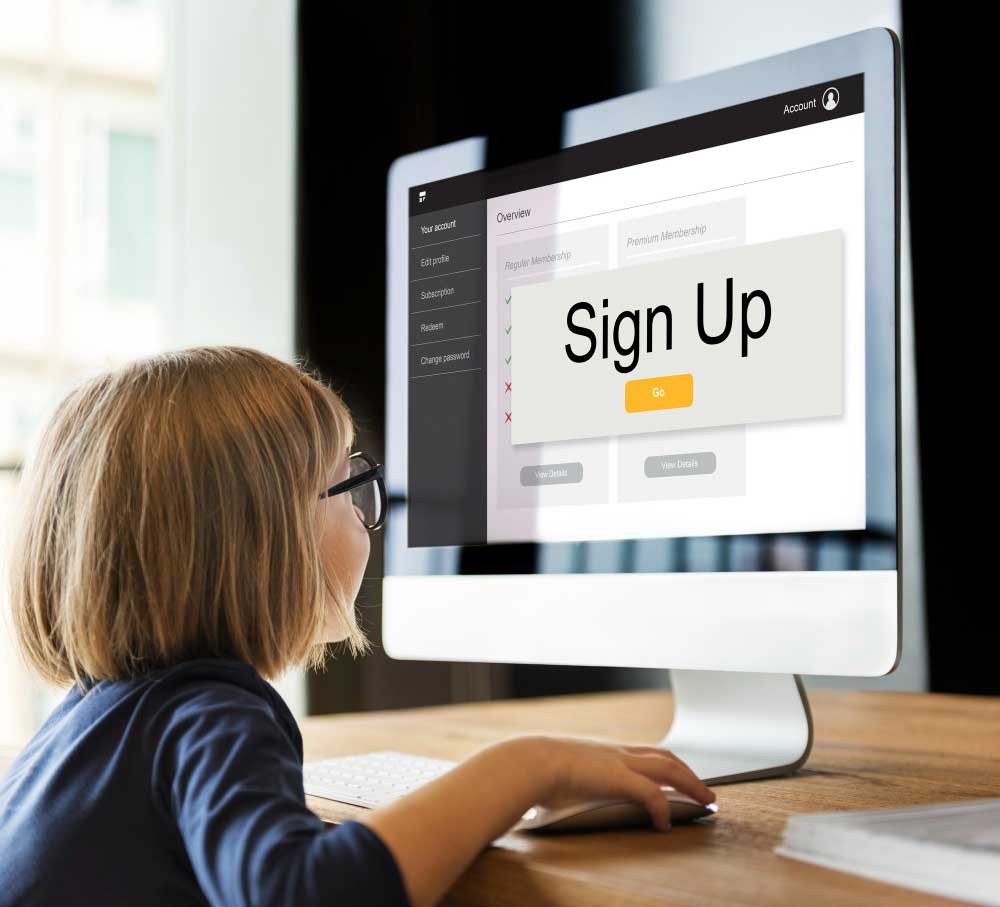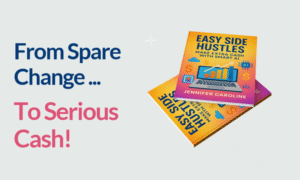The Ultimate Guide to Continuity Programs: Unlock Endless Income with These Proven Strategies
 Are you looking to create a steady stream of income while delivering ongoing value to your customers? Continuity programs might just be the key to unlocking that potential.
Are you looking to create a steady stream of income while delivering ongoing value to your customers? Continuity programs might just be the key to unlocking that potential.
Whether you’re new to the concept or looking to optimize an existing program, this guide is here to help.
In a Q&A format, we’ll walk you through everything you need to know about continuity programs, from the basics to advanced strategies that can turn a simple subscription service into a powerful revenue generator.
Let’s dive in to discover how you can build a successful continuity program that keeps your audience engaged and your income flowing.
Q: What is a Continuity Program?
A continuity or recurring income program is a business model where customers make ongoing, regular payments for a product or service. This could be a monthly, quarterly, or annual subscriptions.
Essentially, a continuity program turns one-time customers into long-term revenue generators, providing a solid foundation for business growth and financial stability.
Q: What Are My Benefits to Starting a Continuity Program?
Oh, my dear reader, let’s you and me count the ways! A continuity program is an entrepreneur’s best friend because you don’t have to start from square one on the first of each month. Consider all these many benefits to recurring revenue programs…
1: Financial Stability and Growth
- You have a predictable monthly income ensuring your financial stability
- You don’t have to depend on one-time sales.
- A better overall cash flow, enabling reinvestment in business growth.
- Recurring customers generate more revenue over time, increasing customer lifetime value.
- You pay less for customers. Acquiring new customers is expensive; retaining existing customers is more cost-effective.
- Higher customer lifetime value often leads to improved profit margins.
2: Business Growth and Development
- Consistent value delivery through your continuity program fosters strong customer loyalty and advocacy.
- Regular interactions with your members deepen customer relationships and understanding.
- Ongoing customer data collection from your members enables better product development and marketing.
- You can test new product ideas and services with your existing members.
- Your business is worth more because it contains a predictable revenue stream. This is important if you ever want to sell your business.
- A strong continuity program differentiates your business from competitors.
3: Peace of Mind Benefits
- Consistent income provides a sense of financial security and peace of mind.
- Extra income can be invested for long-term financial growth.
- Predictable income stream can accelerate debt repayment.
- You can build a robust emergency fund to handle unexpected expenses.
- Increased income can enhance lifestyle and quality of life.
- Consistent income contributes to a comfortable retirement.
- With proper setup, a continuity program can generate largely passive income. This is huge should you become incapacitated.
- Recurring income can provide the freedom to pursue other interests or projects.
That’s a lot of bullet points that in the end all say one thing – having your own continuity program means true financial peace of mind.
Imagine you’re a trust fund baby and every month you know you’re getting a certain amount of money, no matter what.
Building a continuity program is building your own ongoing income stream, and you get to choose how big you build it.
Q: What Are Some Examples of Continuity Programs?
There are all sorts of recurring income or continuity programs. Three you might be familiar with are paid newsletters, membership sites and software as a service.
Here are some real-life examples:
Software and Services
- Software-as-a-Service (SaaS): Companies like Adobe, Salesforce, and Dropbox offer subscription-based software access.
- Cloud Storage: Services like Google Drive, Dropbox, and iCloud provide storage space for a monthly fee.
- Online Learning Platforms: Platforms like MasterClass, LinkedIn Learning, and Coursera offer monthly or annual subscriptions for educational content.
Membership-Based Models
- Retail Store Memberships: Stores like Costco or Sam’s Club offer membership-based shopping benefits.
- Online Communities and Forums: Exclusive access to content, networking, and resources for a monthly fee.
- Online Gaming Subscriptions: Access to online games and features for a monthly fee.
Paid Newsletters
- The Hustle’s “Trends”: Offers deep dives into business trends, opportunities, and ideas. Subscribers receive research reports, case studies, and insights that help them stay ahead of market shifts. Includes access to a private community for networking.
- Ben Thompson’s “Stratechery”: Provides in-depth analysis of the business and strategy behind technology and media companies.
- The Information: Offers exclusive news, analysis, and insights into the tech industry.
- Lenny’s Newsletter: Created by Lenny Rachitsky, a former Airbnb product manager, this newsletter covers best practices, tips, and strategies for product managers and startup founders.
- Morning Brew’s “Insider”: Morning Brew, originally a free daily newsletter, launched “Insider” as a premium subscription offering. It provides deeper analysis, exclusive content, and additional resources for business professionals.
Q: How Do I Choose What Kind of Continuity Program to Build?
No matter what niche you’re in, odds are there is a continuity program you can start.
But let’s assume for a moment that you don’t yet have a business. Perhaps the easiest way to begin building a continuity program is to choose something delivered digitally, such as a newsletter, an information membership site, or software as a service.
You might begin by defining who your ideal customers are.
- Who are they and what do they want?
- What problem(s) are you solving or what needs are you fulfilling?
- Are there complementary products or services you can bundle?
- And what is the perceived value of your offering?
Then there’s customer acquisition and retention to consider.
- How will you attract new subscribers?
- What incentives can you offer to encourage sign-ups?
- How will you retain existing subscribers?
- What customer support mechanisms will you implement?
The key to a successful continuity program is providing exceptional value to your customers.
For example, if you can save them 8 hours per month by finding all the information they need and placing it in your membership site or newsletter, that’s certainly worth a $20 a month subscription fee.
Or perhaps your software enables your members to build their businesses, in which case they won’t mind paying $99 a month or even more.
As with any product, the key is to make an offer that is so good, it’s a no-brainer to join.
Q: What are Some Ideas for My Own Continuity Program?
Any of these could be good for beginners and seasoned entrepreneurs alike:
Exclusive Industry Insights: Provide weekly or monthly insights into industry trends, market analysis, or expert predictions relevant to your audience.
Curated Resources: Offer a collection of handpicked articles, tools, or resources that save your members time by giving them the best information available.
Templates & Worksheets: Create and distribute customizable templates, spreadsheets, or worksheets that solve specific problems for your audience.
Discounts & Offers: Provide access to exclusive discounts or special offers on products, services, or events relevant to your subscribers.
Weekly Challenges: Design challenges that encourage members to implement something new each week, such as a business strategy, wellness routine, or productivity hack.
Behind-the-Scenes Content: Share content that gives members an inside look at your business processes, decision-making, or project development.
Q&A Sessions: Host regular Q&A sessions where members can ask questions directly and receive personalized advice.
Guest Expert Interviews: Bring in industry experts to share their knowledge through interviews, webinars, or articles, giving members access to exclusive information.
Masterclasses or Webinars: Offer monthly masterclasses or webinars on specific topics, helping members develop new skills or deepen their knowledge.
Member-Only Community: Create a private community (like a Facebook group or forum) where members can network, share ideas, and support each other.
Early Access to Content: Give members early access to new content, products, or features before they are released to the public.
Personalized Recommendations: Use data to provide personalized content, product, or service recommendations based on each member’s interests or past behavior.
Success Stories and Case Studies: Share in-depth case studies or success stories from members who have achieved significant results using your advice or products.
Monthly Book Summaries: Offer summaries of books relevant to your niche, saving members time while keeping them informed on key concepts.
Toolkits and Resource Libraries: Create a growing library of toolkits and resources that members can access as long as they are subscribed.
Accountability Groups: Set up small groups within your membership for peer accountability and support, helping members achieve their goals.
Exclusive Software Tools: Offer access to a SaaS tool or software that is only available to members, such as a custom CRM or analytics tool.
Daily Motivation or Inspiration: Send daily motivational quotes, affirmations, or success stories to keep members inspired and focused.
Digital Magazine: Produce a monthly or quarterly digital magazine that compiles the best articles, interviews, and resources in a visually appealing format.
Personalized Coaching: Provide members with one-on-one coaching or personalized feedback sessions, helping them apply what they learn to their specific situation.
Q: What are the Most Common Continuity Program Mistakes that I Can Avoid?
When starting a continuity program, marketers often make some avoidable mistakes that can undermine the success of their efforts. Here are seven common mistakes:
- Lack of a Clear Value Proposition
- Mistake: Not clearly defining the unique value or benefits of the continuity program can leave potential subscribers uninterested or confused. If customers don’t understand what makes your program special, they won’t see the need to subscribe.
- Solution: Clearly articulate what members will receive, how it will benefit them, and why it’s worth the recurring fee.
- Inconsistent Content Delivery
- Mistake: Failing to consistently deliver content or services as promised can quickly lead to subscriber churn. Customers expect regular, reliable updates or products as part of their subscription.
- Solution: Set a realistic content or service delivery schedule and stick to it, ensuring that subscribers receive value at regular intervals.
- Overloading Subscribers with Content
- Mistake: Bombarding subscribers with too much content can be overwhelming, causing them to disengage or unsubscribe. More content doesn’t always equal more value.
- Solution: Focus on quality over quantity. Provide content that is valuable, actionable, and easy to consume.
- Neglecting Customer Feedback
- Mistake: Ignoring subscriber feedback can lead to a disconnect between what you’re offering and what your customers actually want. This can result in high churn rates.
- Solution: Actively seek and respond to feedback. Use surveys, polls, and direct communication to understand your subscribers’ needs and adjust your offerings accordingly.
- Poor Pricing Strategy
- Mistake: Setting a price that is either too high or too low can affect the perceived value of your program. Overpricing may deter sign-ups, while underpricing can lead to financial instability.
- Solution: Research your target audience and competitors to find a pricing sweet spot that reflects the value provided and aligns with customer expectations.
- Neglecting Onboarding
- Mistake: Not providing a smooth onboarding experience can leave new subscribers confused or disengaged, leading to early cancellations.
- Solution: Create a simple, user-friendly onboarding process that helps new subscribers understand how to access and use the content or services immediately after they join.
- Ignoring Long-Term Engagement
- Mistake: Focusing only on acquiring new subscribers while neglecting to keep current members engaged can result in high churn rates. It’s easier and more cost-effective to retain customers than to acquire new ones.
- Solution: Develop strategies for long-term engagement, such as offering exclusive content, creating a community, or offering loyalty rewards to keep subscribers interested and committed.
By avoiding these mistakes, you can increase your chances of building a successful continuity program that attracts and retains loyal subscribers, ultimately leading to a stable and growing income stream.
Q: Do You Have Any Tips on How to Start and Run a Successful Continuity Program?
Based upon my experiences, here’s what I would suggest…
- Start with a Clear Value Proposition
- Clearly define what members will gain from staying in your program. This should be a unique benefit they can’t easily find elsewhere.
- Use Tiered Membership Levels
- Offer different levels of membership, each with increasing benefits, to appeal to various customer segments and encourage upgrades.
- Personalize Member Experiences
- Use AI and data analytics to tailor content, offers, and recommendations to individual members, increasing their perceived value of the program.
- Offer a Low-Cost Trial
- Allow potential members to experience the program at a lower cost or even for free for a limited time. This reduces risk and increases conversions.
- Create a Private Community
- Build a members-only forum or group (e.g., on Facebook or Discord) where they can interact, share experiences, and feel part of an exclusive community.
- Regularly Update Content
- Keep the content fresh by regularly adding new materials, such as courses, videos, or articles, to keep members engaged and returning.
- Gamify the Experience
- Incorporate gamification elements like badges, leaderboards, or challenges to make the experience more engaging and rewarding.
- Leverage Drip Content
- Gradually release content to keep members engaged over time. This also prevents overwhelm and encourages long-term retention.
- Use Retention Emails Strategically
- Develop a sequence of retention emails that go out at critical points in the customer journey, reminding them of the benefits they’re receiving.
- Create Exclusive Member Events
- Host webinars, live Q&A sessions, or in-person events that are only accessible to members, increasing the program’s perceived value.
- Offer a Member Referral Program
- Incentivize current members to bring in new ones by offering rewards or discounts for successful referrals.
- Conduct Regular Surveys
- Regularly ask members for feedback on what’s working and what’s not, and adjust the program accordingly to keep them satisfied.
- Surprise and Delight with Unannounced Bonuses
- Occasionally offer unexpected bonuses, such as additional content, discounts, or gifts, to keep members pleasantly surprised and engaged.
- Create Evergreen Content
- Develop content that remains valuable over time, ensuring that new members always have access to high-quality resources from day one.
- Implement a Predictable Content Schedule
- Create and communicate a clear schedule of when new content or features will be released, so members know when to expect new materials.
- Utilize FOMO (Fear of Missing Out)
- Promote limited-time offers or bonuses that create a sense of urgency, encouraging prospects to join before they miss out.
- Offer a Satisfaction Guarantee
- Provide a money-back guarantee for a limited time to reduce the risk for new members and increase conversion rates.
- Track and Reward Engagement
- Use analytics to monitor member activity and reward those who are most engaged with special perks or recognition.
- Provide a Clear Cancellation Path
- Make it easy for members to cancel, but offer incentives or alternatives (like pausing their membership) to retain them.
- Bundle with Other Products or Services
- Offer the continuity program as part of a larger package, adding value and making it harder for customers to justify canceling.
- Create an Affiliate Program
- Allow others to promote your continuity program in exchange for a commission, expanding your reach.
- Incorporate Feedback Loops
- Show members how their feedback directly influences the program, making them feel valued and more invested in its success.
- Use a Dedicated Customer Success Team
- Have a team specifically focused on ensuring members get the most out of their subscription, reducing churn.
- Offer Yearly Subscriptions with Discounts
- Encourage long-term commitment by offering a significant discount for annual subscriptions compared to monthly payments.
- Optimize for Mobile Experience
- Ensure your continuity program is fully accessible and user-friendly on mobile devices, catering to users on the go.
These strategies can help you design and manage a continuity program that attracts and retains members, ultimately driving significant recurring revenue for your business.
















